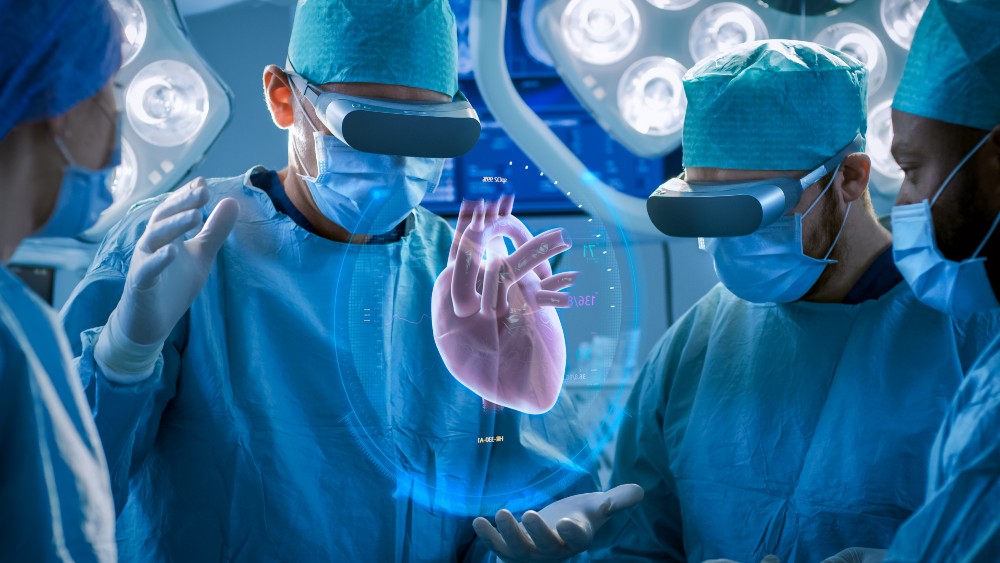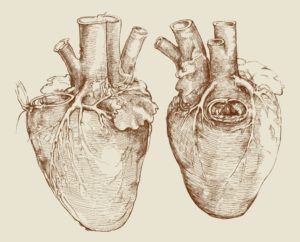In the early 20th century, operating on the human heart safely was seen as a controversial and far-fetched idea. Even the thought of it was ridiculed by the most renowned surgeons of the era. According to Theodor Billroth, the founding father of abdominal surgery, a heart operation was “folly at best, and ignorance at worst.”
But experts in the field reached beyond their wildest dreams, paving the way for a surgical operation that would save countless lives. Among the many pioneers of cardiac surgery is Dr. Manny Villafaña, Founder and CEO of Medical 21.
Where Did It Begin?
Heart surgery has advanced so quickly, it’s difficult to believe that this technique is a little over a half-century old — and if not for World War II, modern cardiovascular surgery might have taken years to develop.
Dwight Harken, a captain in the medical corps at the time, removed foreign objects from around and inside the hearts of more than 100 soldiers between 1943 and 1944. It was the kind of operation that could only be justified in the dire conditions of the battlefield.
Harken’s operations helped experts overcome the false belief that the heart couldn’t be operated on or surgically manipulated. Not only did this open the door for numerous possibilities in the last six decades, but it was also a catalyst for the invention of the first Blalock-Taussig (BT) shunt.
The BT shunt is a tiny tube capable of connecting arterial circulation to pulmonary circulation, which boosts blood flow to the lungs. For many, these remarkable achievements mark the dawn of a new era, proving out an operation that was previously considered impossible.
Key Highlights of the Past 60 Years
In the early days of cardiac surgery, many warned about performing the procedure on children. Critics were especially concerned about those struggling with hypoxia (low oxygen in the blood), severe cyanosis (oxygen-depleted blood), and cardiovascular disease.
They thought it would be too taxing to administer anesthesia and finish the entire operation on these young patients. Countless pediatricians abided by these warnings — it was with great caution that the first congenital heart operation was performed on a child.
By 1959, 120 infants with congenital defects received successful operations at the Texas Children’s Hospital. In time, this surgery drastically improved, eventually becoming a stepping stone to more advanced procedures. Here are some of the key highlights in the last six decades.
Advent of Open-Heart Surgery
The pursuit of open heart surgery, where a surgeon can go inside a beating heart and make repairs, really started with Professor C. Walton Lillehei in the mid-1950s. His extraordinary, high-risk operation on a baby used pumping and oxygenation functions from a nearby donor while the team operated.
Dubbed “cross-circulation surgery,” it was the first time surgeons were able to make surgical corrections in the human heart. Babies who were born with a congenital “hole” in their heart could now be treated. Patients who had valves that needed to be replaced could now have that done as well. Later, Dr. René Favaloro of the Cleveland Clinic was responsible for the advent of cardiac bypass surgery through his work in the 1960s with angina patients.
Valvular Repair and Replacement
Heart valve repair set the stage for a completely different field of opportunities that made use of plenty of clever techniques and devices. In 1952, Harvey and Hufnagel presented the valve that had been used to treat aortic regurgitation after placing it in the patient’s descending aorta.
The plastic ball they used wasn’t nearly as practical as the devices used today. Whenever the patient opened their mouth, the clicking sound of the ball (methacrylate) could be heard across the room. Despite its downsides, the technique did somewhat mitigate aortic regurgitation. It also decreased the left ventricular load by roughly one-third to one-half. Twenty-five years later, Dr. Manny Villafaña invented and introduced the St. Jude Medical bi-leaflet pyrolytic carbon valve, which became the most commonly used prosthesis in the world. It is still the gold standard of mechanical valves.
Coronary Revascularization
Coronary artery disease posed another challenge for early cardiac experts. At first, the only viable alternative was to palliate or modify this ailment. With the invention of coronary arteriography, it was much easier to visualize coronary lesions for the very first time.
Now that a surgeon could spot the location of a blockage, it was much easier to carry out a cardiac bypass surgery. With the discovery of cardioplegic techniques and cardiopulmonary bypass equipment, medical experts constructed a coronary bypass graft of vessels harvested from the patient.
Cardiac Support and Replacement
The first human heart transplant was carried out in 1967, in Capetown, South Africa by Professor Christiaan Barnard. This is probably the most exciting event in the field of cardiovascular surgery. Although the procedure was only temporarily successful, it left a huge mark on history. Soon after the first transplant, surgeons around the world began doing transplants in their respective countries.
Pacemakers and Defibrillators
Pacemakers during the 1960s and early 1970s were large, often failed, and only lasted approximately 18 months before needing to be replaced.
In 1972, Dr. Manny Villafaña, the founder of Cardiac Pacemakers Inc. (CPI), developed the first long-life lithium-powered pacemakers and defibrillators. His was an ambitious goal — he set out to create a pacemaker that could last 10 years instead of the standard 18 months. He surpassed his intended goal and developed pacemakers that lasted 30–40 years instead. The technology he developed in 1973 is incorporated into virtually every pacemaker and defibrillator today.
The Second Iteration of CABG: Evidence-Based Medicine
The second era of cardiac bypass surgery encompasses the 60s through the late 90s. Robert Goetz performed the very first CABG surgery with successful results. The procedure was carried out in New York at the Albert Einstein College of Medicine using Rosenak (tantalum) rings.
On May 2, 1960, Goetz directed a team of four surgeons in anastomosing (connecting) the right internal thoracic artery (RITA) to the right coronary artery (RCA) of a male patient in New York. Two years later on April 4, David Sabiston performed the first clinical case of a directly hand-sewn coronary anastomosis. He anastomosed the saphenous vein graft to the right coronary artery.
Unfortunately, three days later, the patient lost their life due to a stroke. The more successful procedures are attributed to Vasilii I. Kolessov. This renowned Russian surgeon carried out a suture of the RITA to the RCA in 1964 without the use of cardiopulmonary bypass.
In the 1960s, we finally saw CABG at its full potential. Dr. George Green from St. Luke’s Hospital carried out the very first LITA to left anterior descending artery (LAD) anastomosis, becoming the benchmark of cardiac bypass surgery.
Later in the 1960s, the advent of cardiac bypass surgery began with Dr. René Favaloro of the Cleveland Clinic, in which angina, or chest pain, was treated by harvesting vessels from legs and arms to bypass the blockages on the heart muscle.
In 1976, Dr. Manny Villafaña, the founder of St. Jude Medical, Inc., co-developed the St. Jude heart valve with Dr. Demetre Nicoloff — a bi-leaflet valve made of pyrolytic carbon, which quickly became the “gold standard” for heart valve technology. The St. Jude heart valve was first used in a human patient in 1977, and it is still the most commonly used mechanical prosthesis today with approximately five million implanted patients.
The Third Iteration of CABG: Minimal-Invasive & Hybrid Revascularization
Constant technological advances and research in the cardiovascular field have created numerous opportunities. Surgeons have always made it their top priority to come up with minimally invasive procedures that would surpass previous methods.
The goal was relatively simple. Create less invasive revascularization procedures that would offer quicker recovery, reduce the risk of stroke, and reduce patient discomfort. Hybrid techniques have a similar long-term outcome. Using a mix of operations can amplify the results of the surgery and offer patients the best treatment outcome.
In 1992, Dr. Manny Villafaña, founder of ATS Medical, presently a subsidiary of Medtronic, Inc., developed the next-generation ATS Open Pivot bi-leaflet heart valve. This was a significant advancement in heart valve technology and the cardiac bypass surgery procedure. The mechanical heart valve was unique in its pivot design, mirroring the opening and closing of a valve. It enhanced blood flow through a patient’s heart and decreased the risk of blood clots.
Medical Advances: Coronary Bypass Surgery Today
In the early 2000s, there was a boom in percutaneous coronary interventions around the globe. This was paralleled by a rising realization that traditional CABG, despite its clinical benefit, is a highly invasive procedure with room for improvement. Advances in technology continue to improve this surgery and create new opportunities to help patients.
Dr. Manny Villafaña has dedicated the last 50 years of his career to the advancement of cardiac bypass surgery, with the intention of improving the quality of life for millions of patients worldwide. His contributions to the field have catapulted the cardiac bypass surgery procedure to new heights each time.
A New Era
Improving CABG surgery was no easy feat. Medical experts had to overcome numerous obstacles along the way in order to reap the benefits this clinical procedure has to offer. The first attempts at heart operations were ridiculed — but once experts saw their true potential, the wheel started turning.
Led by the Living Legend of Medicine, Dr. Manny Villafaña, Medical 21 has made it their priority to learn from history and have developed the MAVERICS graft, a new generation of artificial grafts, that could take bypass surgery to a whole new level. Artificial grafts are meant to increase the patient’s quality of life and reduce the costs for the healthcare system. To find out more, visit www.medical21.com.
References
https://www.ahajournals.org/doi/10.1161/circ.102.suppl_4.iv-87
https://www.ncbi.nlm.nih.gov/pmc/articles/PMC4208586/
https://www.ncbi.nlm.nih.gov/pmc/articles/PMC5906252/

